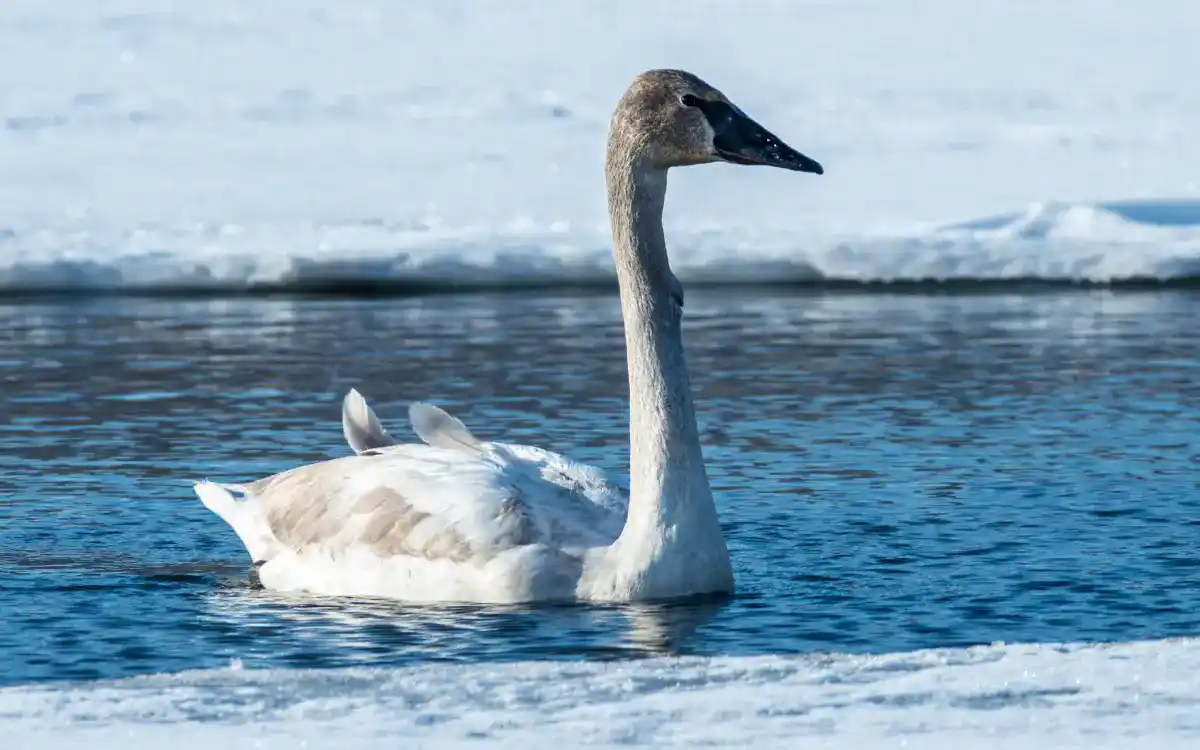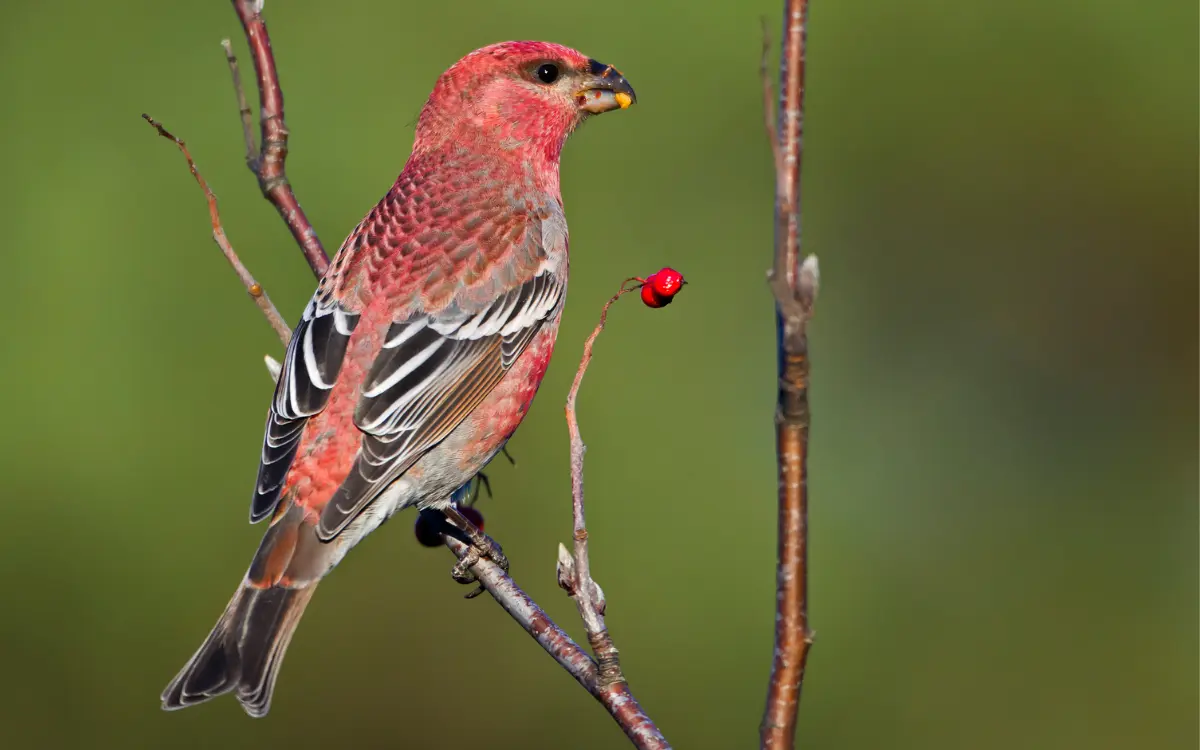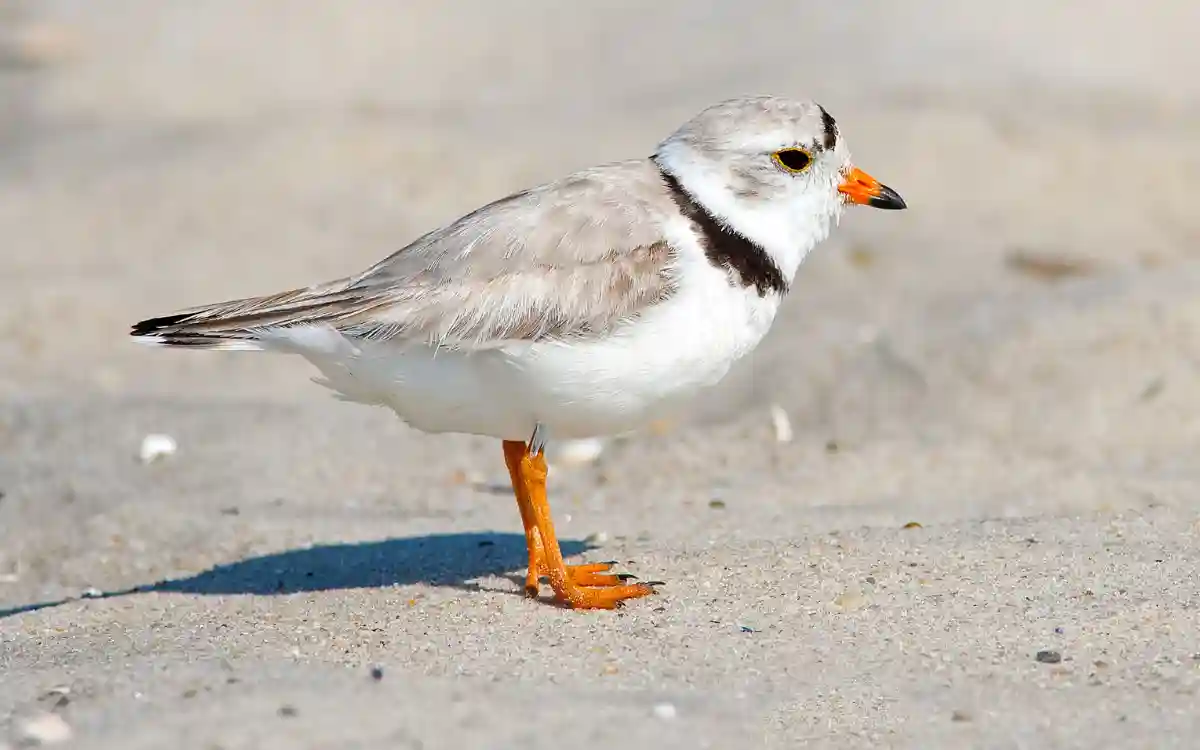Birds of Prey in Alabama: A Complete Guide to the State’s Winged Hunters
Alabama’s mix of rolling hills, river valleys, swamps, and Gulf Coast wetlands makes it one of the best places in the Southeast to see raptors in action. These winged hunters dominate the skies, whether it’s a Bald Eagle circling a reservoir or a tiny kestrel hovering above a field.
This guide introduces you to all the birds of prey found in Alabama, with tips on how to identify them, where to look, and when you’re most likely to spot them.
Hawks of Alabama
Red-tailed Hawk
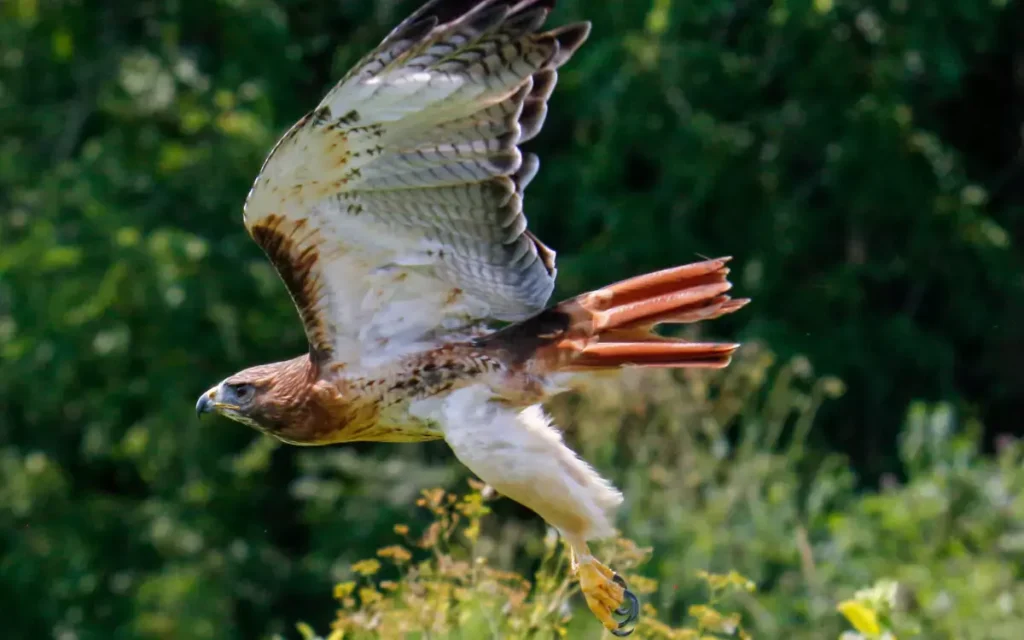
If you’ve ever driven along a country road in Alabama and noticed a large bird perched on a telephone pole, chances are it was a Red-tailed Hawk. These hawks are among the most common raptors in the state, and their fiery rust-colored tail is their trademark. Adults also show a pale belly marked with a dark band across the center.
Red-tailed Hawks are adaptable hunters. They patrol farm fields, grasslands, and forest edges in search of rabbits, snakes, and rodents. Their piercing scream is one of the most recognizable bird calls and is often used in movies as the “sound of a hawk.” Unlike many migratory raptors, Red-tails remain in Alabama year-round, so you can spot them in every season.
Red-shouldered Hawk

Slightly smaller than the Red-tail, the Red-shouldered Hawk is one of Alabama’s most striking forest hunters. True to its name, adults have rufous-colored “shoulders” that glow in sunlight. Their underparts are heavily barred with rust and white, while their wings display a checkerboard pattern.
In Alabama, you’ll often hear these hawks before you see them. Their sharp “kee-yer” call echoes through bottomland forests, especially during spring when they’re defending nests. They prefer wetlands and wooded river corridors, where they hunt frogs, snakes, and small mammals. Red-shouldered Hawks are year-round residents in Alabama, making them reliable companions for patient birders.
Cooper’s Hawk

Fast, agile, and built for pursuit, Cooper’s Hawks are the bird feeders’ nightmare. These medium-sized hawks specialize in chasing down smaller birds, weaving through trees with incredible speed and precision. Adults show a slate-gray back, a rounded tail, and rusty barring on the chest, while juveniles are brown with streaky underparts.
In Alabama, Cooper’s Hawks thrive in wooded suburbs as much as in forests. If you notice songbirds suddenly scattering in panic, look up one of these hawks may be slicing through the trees in pursuit. They’re permanent residents across the state, and their stealthy hunting style makes them thrilling to watch.
Sharp-shinned Hawk
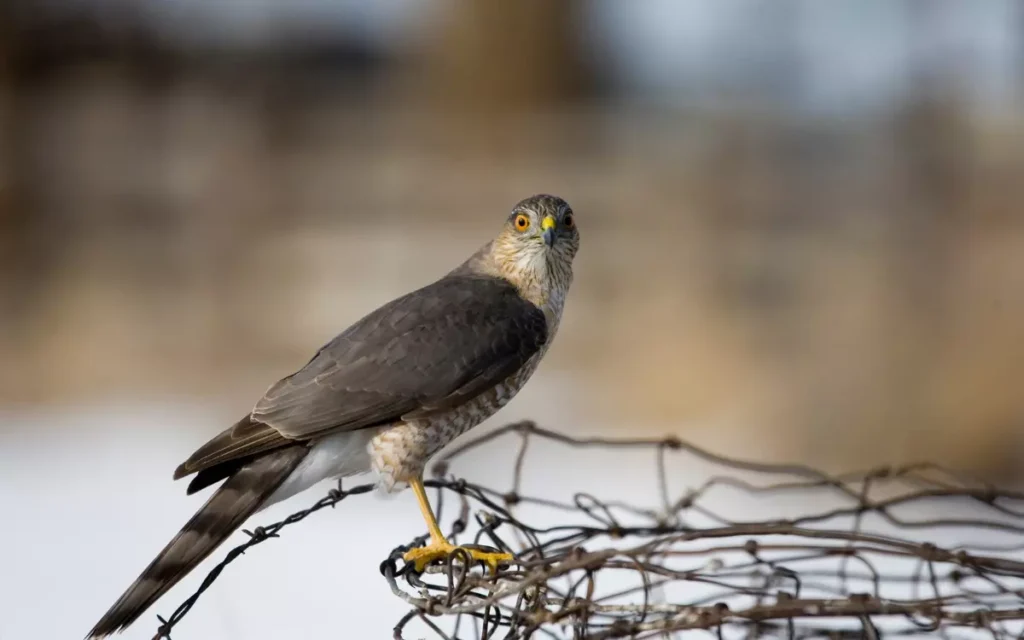
Think of the Sharp-shinned Hawk as the Cooper’s Hawk’s smaller cousin. Barely larger than a Blue Jay, these tiny raptors pack surprising power. They have square-tipped tails, short wings, and long, pencil-thin legs. Juveniles are streaky brown, while adults have a steel-gray back and rusty barred chest.
Sharp-shins prefer dense forests but often move into Alabama during winter. You might spot them zipping past a backyard feeder, chasing sparrows and finches with lightning speed. Because of their size, they can be tricky to distinguish from Cooper’s Hawks, but Sharp-shins are noticeably smaller and more delicate-looking.
Broad-winged Hawk

Every spring, Broad-winged Hawks return to Alabama to nest in large, unbroken forests. They’re medium-sized hawks with compact bodies, short tails marked with broad white bands, and dark trailing edges on their wings. While they may seem inconspicuous most of the year, their migration creates a breathtaking spectacle.
In late summer and early fall, Broad-winged Hawks gather in large groups called “kettles” as they head south to Central and South America. Birders along Alabama’s ridges and high points, such as Cheaha State Park, sometimes witness dozens spiraling upward on thermals at once.
Northern Harrier
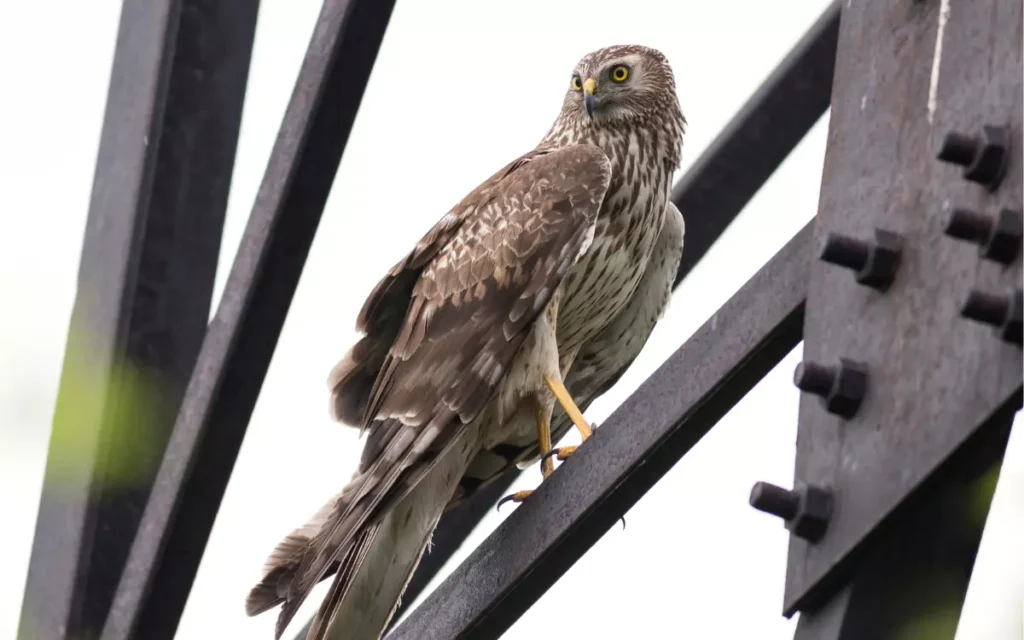
The Northern Harrier is unlike any other hawk in Alabama. Slim and graceful, it has long wings held in a shallow V-shape while gliding low over marshes and fields. Its owl-like facial disk helps it hear prey moving in the grass, giving it an edge when hunting rodents. Males are pale gray, while females and young birds are brown.
Harriers are most often seen in Alabama during fall and winter. Look for them coursing silently above open habitats, tilting from side to side as if balancing on invisible waves of air.
Mississippi Kite

Few raptors are as elegant in flight as the Mississippi Kite. With slender wings and a long tail, these gray-bodied birds often look falcon-like. Adults have pale gray heads and darker wings, while their flight style is buoyant and smooth.
In Alabama, Mississippi Kites are summer residents, especially in the southern half of the state. They often soar above neighborhoods, parks, and farmlands in small groups, catching insects on the wing. Watching a kite pluck a cicada from midair is a highlight of summer birding.
Swallow-tailed Kite

The Swallow-tailed Kite is perhaps the most unmistakable raptor in Alabama. With its bright white body, glossy black wings, and dramatically forked tail, it slices through the air with acrobatic grace. These birds spend much of their lives aloft, snatching lizards, snakes, and insects without ever landing.
Southern Alabama, especially the Mobile-Tensaw Delta and river swamps, is prime habitat for these birds. They arrive in spring and stay through late summer before migrating to South America. Spotting a Swallow-tailed Kite soaring overhead is a true bucket-list experience for birdwatchers.
Eagles and Ospreys in Alabama
Bald Eagle
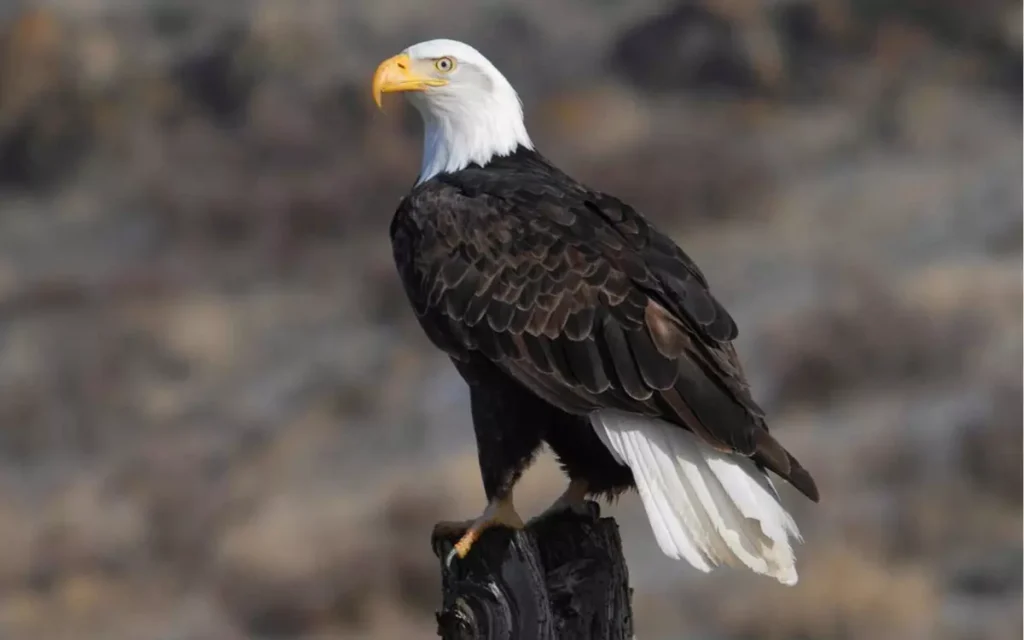
Few sights stir more excitement among Alabama birders than the Bald Eagle. With its gleaming white head and tail set against a chocolate-brown body, the Bald Eagle is a symbol of strength and recovery. These massive raptors can weigh up to 10 pounds, with a wingspan that stretches over seven feet.
Bald Eagles favor areas near lakes, rivers, and coastal waters, where fish make up the bulk of their diet. In winter, Wheeler National Wildlife Refuge becomes a hotspot as migrating eagles join Alabama’s resident pairs, creating one of the best eagle-watching opportunities in the Southeast. Though once endangered due to pesticide use, Bald Eagles are now thriving, and spotting one soaring above an Alabama waterway is a memory you won’t forget.
Osprey
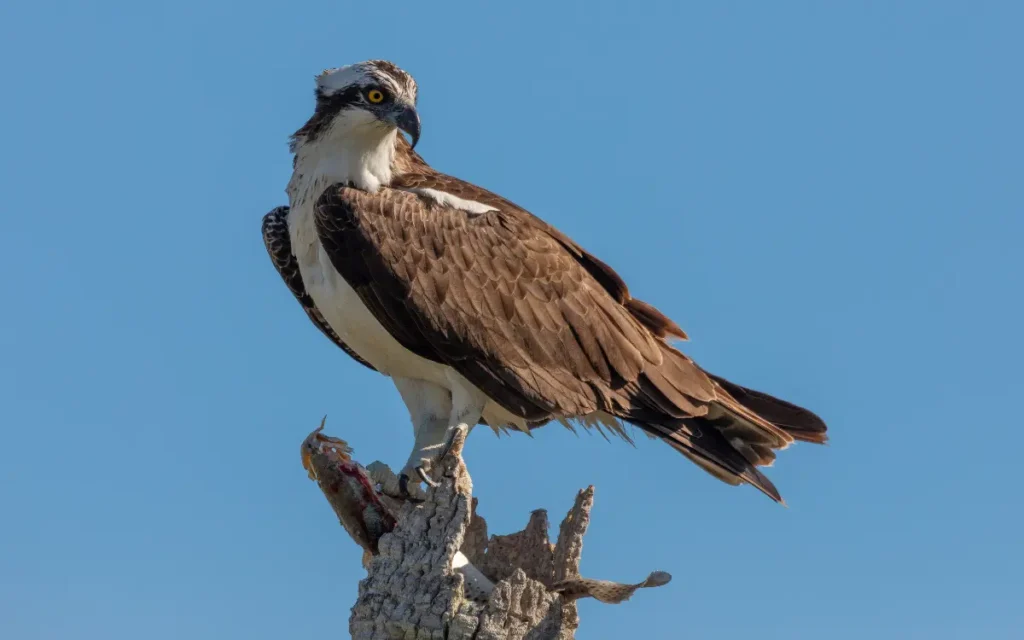
Nicknamed the “fish hawk,” the Osprey is built almost entirely around catching fish. With long, narrow wings, striking black eye stripes, and a white underbelly, these raptors are unmistakable once you’ve seen one dive into the water feet-first.
In Alabama, Ospreys are common along reservoirs, rivers, and coastal bays from spring through fall. They hover high above the water before plunging with talons outstretched, sometimes emerging with fish almost as large as themselves. Some remain along the Gulf Coast in winter, but most migrate south, returning each year to the same nesting platforms or treetop sites.
Falcons of Alabama
American Kestrel
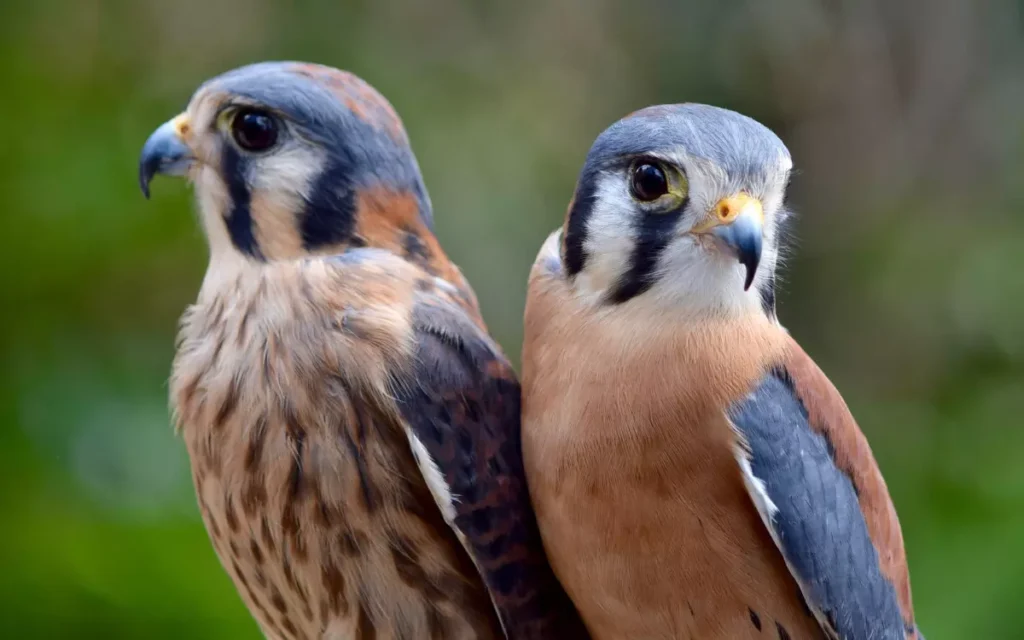
The American Kestrel may be small about the size of a Blue Jay but it’s a fierce hunter. Males show a beautiful mix of blue-gray wings, rusty backs, and a reddish tail, while females wear a more uniform brown. Unlike larger raptors, kestrels often hover in place, beating their wings rapidly while scanning for grasshoppers, mice, and small birds.
You’ll often spot kestrels perched on power lines or fence posts along Alabama’s rural roadsides, especially during winter when their numbers swell. Their bold personality and colorful plumage make them a favorite among birdwatchers.
Merlin
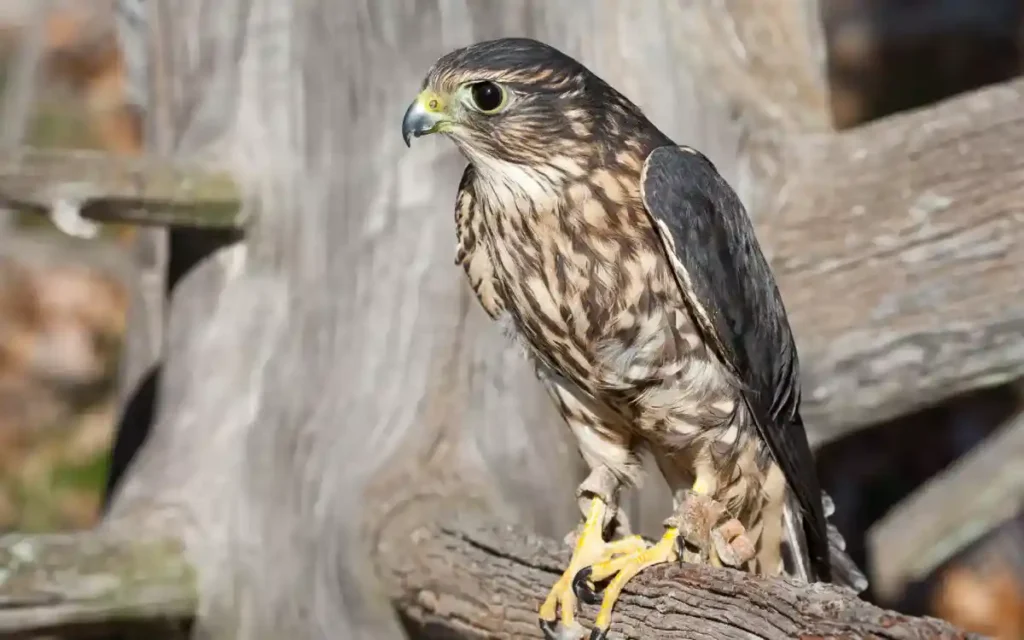
Compact and powerful, the Merlin is a falcon built for speed. Darker and more streaked than kestrels, Merlins are stocky hunters that chase small birds in fast, direct flights. They lack the hovering behavior of kestrels, instead relying on sudden, explosive chases to catch their prey midair.
In Alabama, Merlins are usually seen during migration or winter, especially near open fields and coastal areas. While not as common as kestrels, their dashing hunting style makes any sighting exciting.
Peregrine Falcon
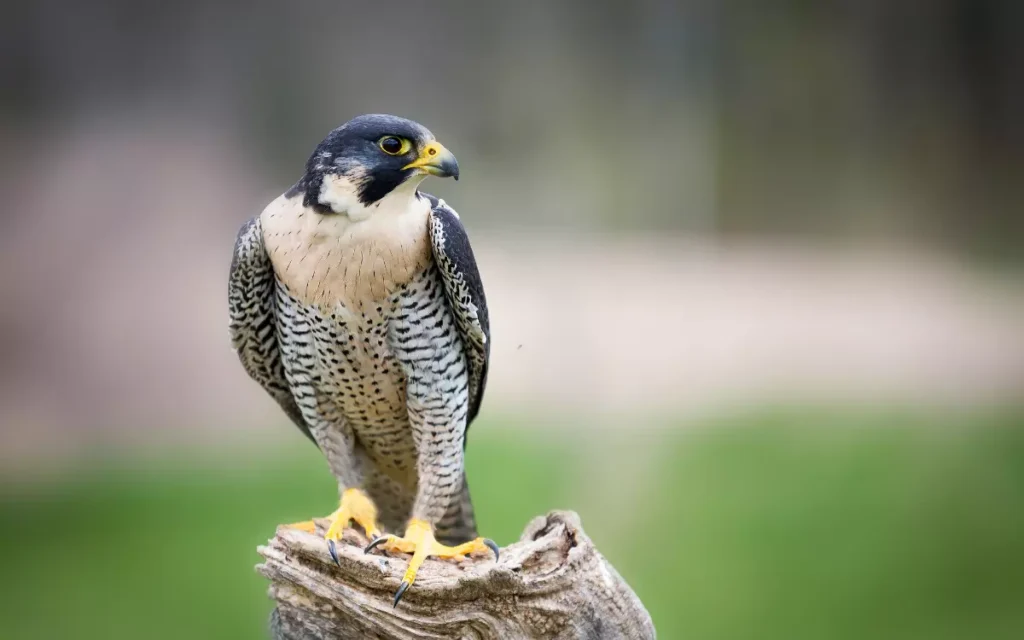
The Peregrine Falcon holds the crown as the fastest animal on earth, capable of diving at speeds over 200 mph. Sleek and powerful, it shows a blue-gray back, a barred underside, and a bold black “mustache” mark on its face.
In Alabama, Peregrines are most often spotted during spring and fall migrations, though some remain near tall city buildings or coastal cliffs. Watching one stoop from the sky to strike a pigeon or shorebird is one of the most thrilling birding experiences possible.
Owls of Alabama
Great Horned Owl
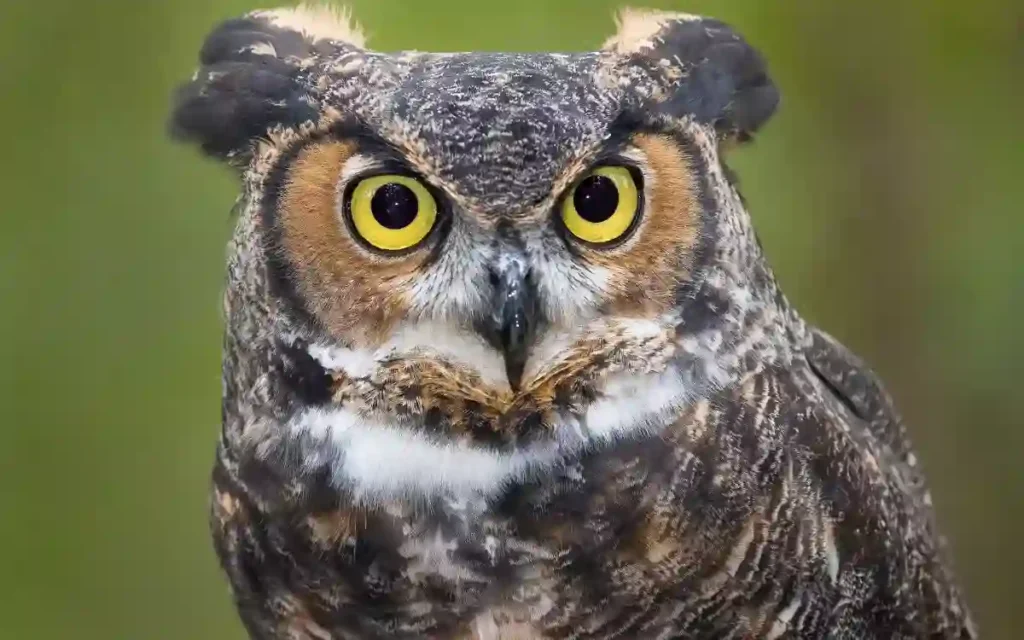
The Great Horned Owl is Alabama’s largest resident owl, instantly recognizable by its tufted “horns” and piercing yellow eyes. Known as the “tiger of the skies,” it preys on everything from rabbits and squirrels to skunks and other birds. Its deep, booming hoots echo across forests, farmland, and even suburban parks.
These owls nest early in the year, often reusing old hawk or eagle nests. Because they’re permanent residents, you can hear or see them year-round, especially during winter courtship when pairs call back and forth at night.
Barred Owl
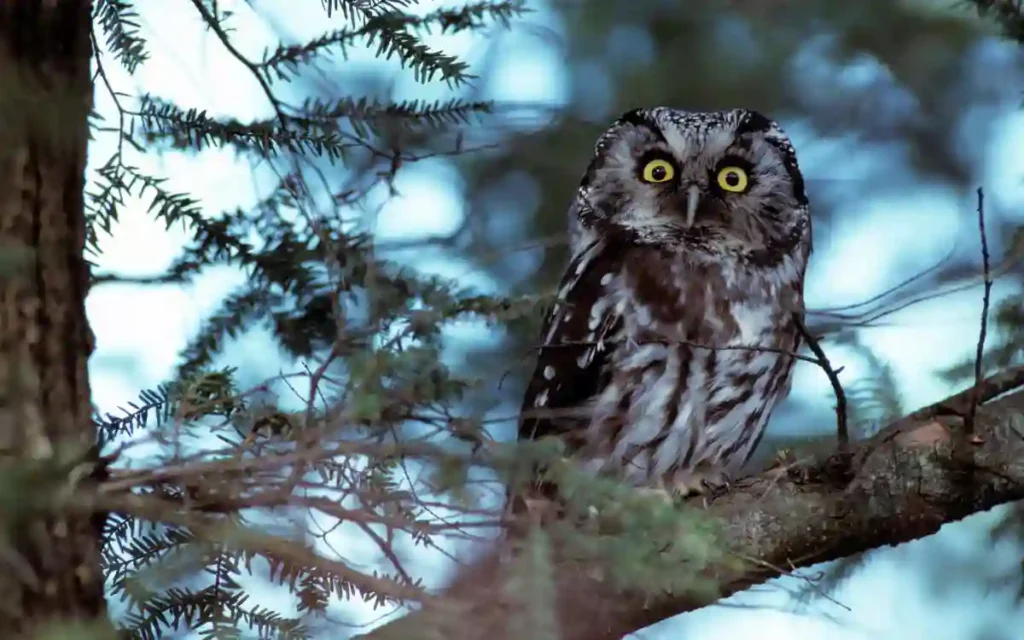
With its rich brown streaks, soulful dark eyes, and “who-cooks-for-you, who-cooks-for-you-all” call, the Barred Owl is one of Alabama’s most familiar nocturnal voices. Unlike the Great Horned, it lacks ear tufts, giving it a rounded, almost gentle look.
Barred Owls love swamps, floodplain forests, and wooded riversides. They are common year-round residents and are more often heard than seen, though a patient observer may spot them perched quietly near water.
Eastern Screech-Owl

Small but full of character, the Eastern Screech-Owl comes in two color forms: gray and reddish-brown. Both blend seamlessly into tree bark, making them nearly invisible when roosting during the day. At night, their haunting trills and whinnies fill Alabama’s woodlands and suburban backyards.
Despite their size, screech-owls are fierce hunters, taking insects, small birds, and rodents. They’re often the most approachable owls for beginners, since they live in both rural and urban settings.
Barn Owl

Elegant and ghostly, the Barn Owl is unlike any other Alabama owl. Its heart-shaped white face and pale underparts make it easy to identify in low light. Unlike hooting owls, Barn Owls produce eerie screeches that echo across open fields and farmland at night.
They nest in barns, silos, and hollow trees, feeding primarily on rodents. Though not as common as Barred or Great Horned Owls, they can be found in rural parts of Alabama year-round, particularly in agricultural areas.
Northern Saw-whet Owl
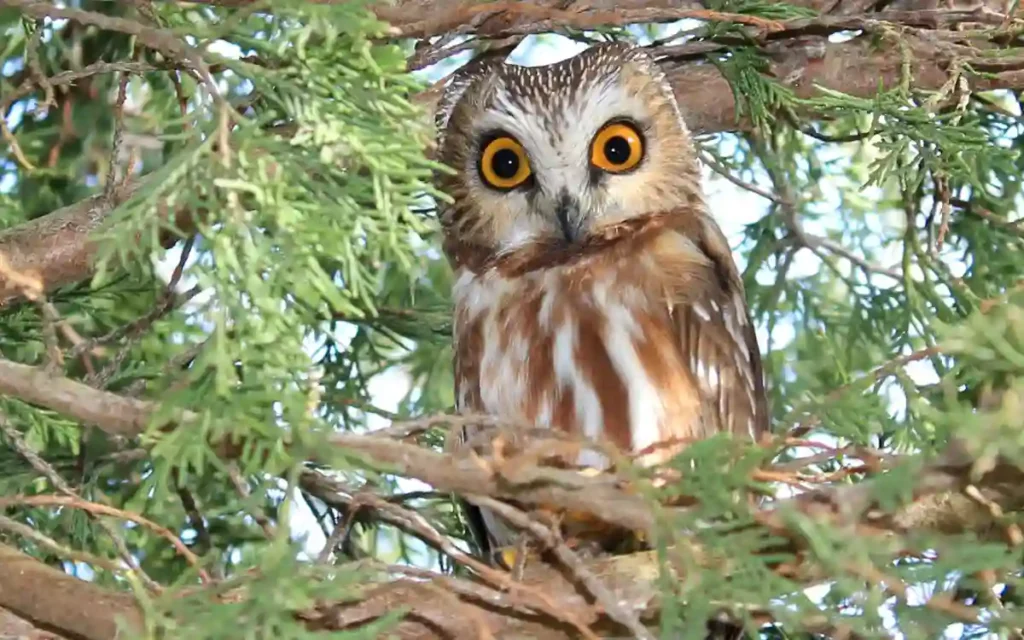
The Northern Saw-whet Owl is a tiny, secretive species rarely seen in Alabama. With its oversized head, bright yellow eyes, and cat-like expression, it looks more like a stuffed toy than a bird of prey.
Saw-whets are primarily winter visitors in northern parts of the state and are so elusive that even experienced birders may never encounter one. Their high-pitched “toot-toot-toot” call resembles the sound of a saw being sharpened, which is how they earned their name.
Short-eared Owl

Unlike most owls, the Short-eared Owl is often active during the day, especially at dawn and dusk. Medium-sized with streaky brown plumage and yellow eyes outlined in black, they fly with a buoyant, moth-like motion over grasslands and marshes.
In Alabama, they are winter visitors, best looked for in open areas such as reclaimed fields or coastal marshes. Their ground-nesting habits and wide-ranging flights make them a unique addition to Alabama’s raptor list.
Long-eared Owl

The Long-eared Owl is slim and secretive, with tall ear tufts and orange facial disks. They prefer dense forests near open hunting grounds, roosting quietly during the day and hunting small mammals at night.
These owls are among the rarest raptors in Alabama, usually appearing only in winter. Spotting one requires luck, patience, and often a tip from other birders who know where they roost.
Honorable Mention: Vultures
Though not technically birds of prey (they lack strong talons), vultures share many traits with raptors and play a vital ecological role as nature’s cleanup crew.
Black Vulture
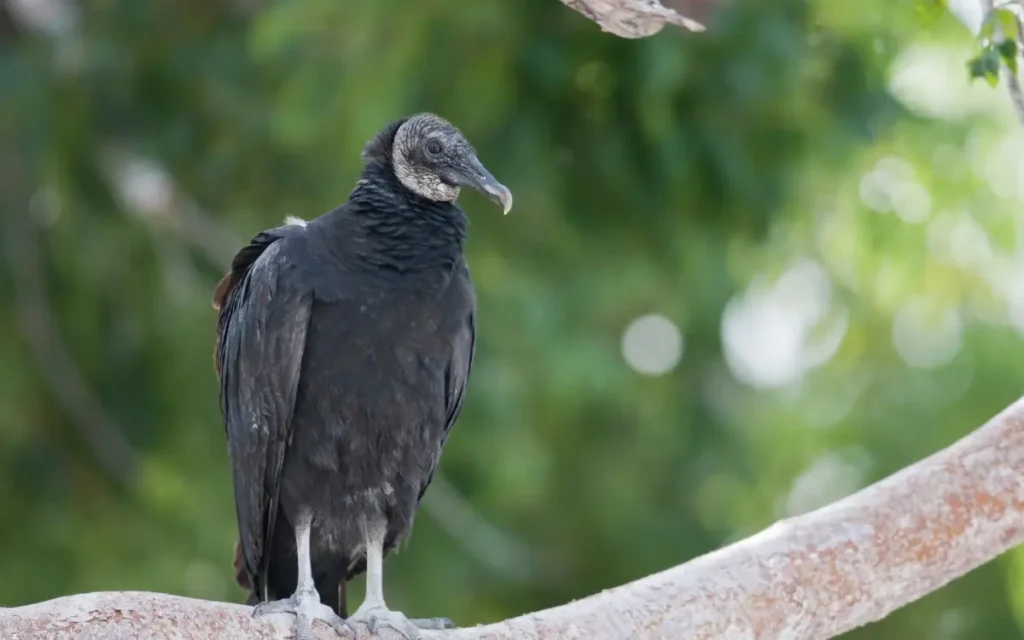
Stocky and short-tailed, the Black Vulture is easy to recognize by its bare black head and white wingtips. They often soar in groups and are commonly found near towns, farmland, and highways where carrion is plentiful.
Turkey Vulture

Larger and longer-winged than Black Vultures, Turkey Vultures show red heads as adults and wobble slightly in flight with wings held in a shallow V. They’re widespread across Alabama, riding warm thermals over forests and fields year-round.
FAQs
What is the most common bird of prey in Alabama?
The Red-tailed Hawk is the most frequently spotted raptor across Alabama. It’s highly adaptable, living in rural farmland, suburban areas, and along highways. Its distinctive reddish tail makes it easy to recognize, and it can be seen year-round.
Where is the best place to see Bald Eagles in Alabama?
Wheeler National Wildlife Refuge near Decatur is the state’s premier Bald Eagle viewing location. Each winter, hundreds of eagles gather there, and the refuge even hosts annual eagle-watching events. Bald Eagles can also be seen year-round along rivers and large reservoirs across the state.
Are owls easy to spot in Alabama?
Owls can be tricky to see because most are nocturnal and rely on camouflage. However, you can often hear them at night. The Barred Owl’s “who-cooks-for-you” call is especially common in Alabama’s forests. For actual sightings, patient birders sometimes spot Eastern Screech-Owls or Great Horned Owls near wooded parks and backyards.
Do Swallow-tailed Kites live in Alabama all year?
No, Swallow-tailed Kites are only summer visitors to Alabama. They arrive in March and leave by August, nesting mainly in southern swamps and river basins. They spend the rest of the year in South America.
Are vultures considered birds of prey?
Not technically. While vultures resemble raptors and are often grouped with them, they lack the strong talons needed to kill live prey. Instead, they feed on carrion, helping to clean ecosystems. In Alabama, Black Vultures and Turkey Vultures are both common year-round.


